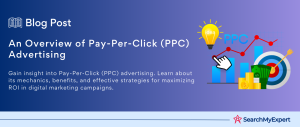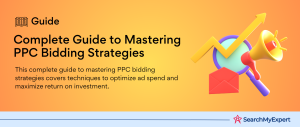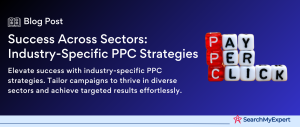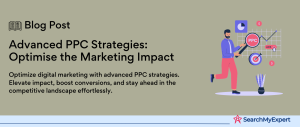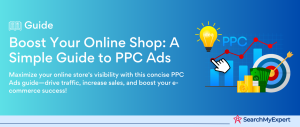PPC Reporting and Analysis
Pay-Per-Click (PPC) advertising has become a cornerstone of digital marketing strategies, offering businesses a powerful tool to reach their target audiences effectively. In this context, PPC reporting and analysis emerge as critical components for maximising the return on investment (ROI) from these digital campaigns.
Defining PPC Reporting and Analysis
At its core, PPC reporting involves the process of gathering and organising data from PPC campaigns. This includes metrics like click-through rates, costs per click, and conversion rates. PPC analysis, on the other hand, dives deeper into this data, providing insights into campaign performance and identifying opportunities for optimization.
Why PPC Reporting and Analysis Matter?
Effective PPC reporting and analysis offer numerous benefits:
- Data-Driven Decision Making:
They enable marketers to make informed decisions based on actual performance data. - Performance Tracking: By tracking key metrics, businesses can assess whether their campaigns are meeting their objectives.
- Budget Optimization:
Analysis of PPC data helps in optimising spending for better ROI. - Insight into Customer Behaviour:
Understanding how users interact with ads can inform broader marketing strategies. - Competitive Advantage: In a crowded digital space, effective PPC analysis can provide a competitive edge by identifying trends and opportunities that others may miss.
Understanding Essential PPC Metrics
Key Performance Indicators (KPIs) for PPC Campaigns
Click-Through Rate (CTR):
- Definition: CTR measures the percentage of people who clicked on your ad after seeing it.
- Importance:
It indicates the relevance and appeal of your ad to your target audience.
Cost Per Click (CPC):
- Definition:
CPC calculates the average cost incurred for each click on your ad. - Importance: It helps manage the budget effectively, ensuring you are not overpaying for clicks.
Conversion Rate:
- Definition: This metric shows the percentage of clicks that resulted in a conversion (a sale, a sign-up, etc.).
- Importance: Conversion rate is vital for measuring the effectiveness of your ad in driving desired actions.
Return on Ad Spend (ROAS):
- Definition: ROAS assesses the revenue generated for every dollar spent on your PPC campaign.
- Importance: It’s crucial for evaluating the profitability of your PPC efforts.
Cost per Conversion:
- Definition:
This KPI indicates the cost incurred to acquire a conversion. - Importance: It helps understand the value of conversions relative to their cost.
Additional Metrics to Consider
Average Position:
- Definition: It shows the average ranking of your ad in search results.
- Importance: Higher positions generally lead to more visibility and clicks.
Quality Score:
- Definition:
A metric provided by platforms like Google Ads, assessing the quality and relevance of your ads. - Importance:
Higher quality scores can lead to lower CPCs and better ad placements.
Impression Share:
- Definition: The percentage of times your ad was shown out of the total eligible impressions.
- Importance:
It helps in understanding the potential reach of your ads.
Conversion Value:
- Definition: This quantifies the value generated from conversions.
- Importance:
It’s essential for understanding the direct financial impact of your PPC campaigns.
Data Collection and Preparation for PPC Reporting
Effective PPC reporting hinges on the accurate and comprehensive collection and preparation of data. This step is crucial in ensuring that the analysis is based on reliable information, leading to actionable insights.
Identifying Data Sources
PPC Advertising Platforms:
- Examples: Google Ads, Bing Ads, etc.
- Role:
These platforms are primary sources of campaign-specific data such as clicks, impressions, CTR, and CPC.
Analytics Tools:
- Examples: Google Analytics, Adobe Analytics, etc.
- Role:
They provide in-depth insights into user behaviour post-click, such as bounce rates, session duration, and conversion paths.
Internal Data Sources:
- Examples:
CRM systems, sales data, etc. - Role:
These sources contribute to understanding the broader impact of PPC campaigns on business metrics like customer lifetime value and sales trends.
Data Collection Methods
Manual Data Extraction:
- Process: Involves manually downloading reports and data from various platforms.
- Consideration: It can be time-consuming and prone to human error, suitable for small-scale campaigns.
Automated Data Integration Tools:
- Process: Utilising tools like Supermetrics or APIs for automatic data aggregation.
- Advantage: Ensures real-time data collection with reduced errors, ideal for larger, more complex campaigns.
Data Preparation and Cleansing
Data Validation and Error Checking:
- Objective: To ensure accuracy and reliability of the collected data.
- Process: Involves checking for anomalies or inconsistencies in the data.
Data Formatting and Normalisation:
- Objective:
To standardise data for consistency and comparability. - Process:
Includes tasks like converting currencies, standardising date formats, etc.
Data Organization and Storage:
- Objective: Efficient data management for easy access and analysis.
- Process: Involves categorising data logically, such as by campaign, date range, or geographic location, and storing it in accessible formats.
PPC Reporting Framework
Creating a structured PPC reporting framework is essential for comprehensively understanding and communicating the performance of your campaigns. This framework should align with your business goals and cater to the needs of different stakeholders.
Defining Reporting Goals and Objectives
Identifying Stakeholders and Their Information Needs:
- Process: Determine who will be using these reports (e.g., marketing team, executives, clients) and what information they require.
- Outcome: Tailored reports that address specific questions and concerns of each stakeholder group.
Aligning Reports with Business Goals and Objectives:
- Process: Ensure that the reports reflect and measure the key objectives of your PPC campaigns, such as lead generation, brand awareness, or sales.
- Outcome: Reports that not only provide data but also insights on how PPC activities contribute to the overall business goals.
Structuring PPC Reports
Executive Summary:
- Content: A high-level overview of campaign performance, highlighting key metrics and insights.
- Purpose:
To provide a quick snapshot of performance for decision-makers.
Campaign Overview:
- Content: Detailed data on campaign settings, budgets, and overall performance.
- Purpose: To offer a comprehensive view of the campaign setup and its results.
Keyword Performance Analysis:
- Content:
Insights into which keywords are performing well and which are not. - Purpose: To guide keyword optimization strategies.
Ad Group Performance Analysis:
- Content:
Evaluation of different ad groups in terms of their contribution to campaign goals. - Purpose: To identify areas for improvement at the ad group level.
Landing Page Performance Analysis:
- Content:
Analysis of how different landing pages are converting visitors. - Purpose:
To optimise landing pages for higher conversions.
Conversion Analysis:
- Content:
Detailed look into conversion rates, cost per conversion, and conversion value. - Purpose: To understand the effectiveness of the campaign in driving desired actions.
Recommendation Section:
- Content:
Actionable suggestions based on the report’s findings. - Purpose:
To guide future campaign strategies and optimizations.
Visualizing Data Effectively
Using Charts and Graphs:
- Technique: Employing visual tools like bar charts, line graphs, and pie charts to represent data.
- Benefit: Facilitates easier understanding of trends and patterns.
Employing Color-Coding and Annotations:
- Technique:
Using colours to differentiate data points and annotations for clarity. - Benefit:
Enhances readability and draws attention to key information.
Customising Visuals to Align with Reporting Goals:
- Technique: Tailoring visual elements to match the objectives of the report and the preferences of the audience.
- Benefit: Creates a more engaging and relevant report.
Analysing PPC Performance
Thorough analysis of PPC performance is crucial for understanding the effectiveness of your campaigns and for identifying areas of improvement. This step involves a deep dive into the collected data, spotting trends, and making informed decisions based on these insights.
Identifying Trends and Patterns in PPC Data
Tracking Changes in Key Metrics Over Time:
- Process: Monitor metrics like CTR, CPC, conversion rate, and ROAS over different time frames.
- Outcome:
Identifying trends such as seasonal variations or the impact of specific changes in campaign strategy.
Analysing Data by Campaign, Ad Group, Keyword, and Landing Page:
- Process: Segment data to understand performance at different levels of your PPC campaigns.
- Outcome:
Pinpointing which elements of your campaigns are driving success and which need optimization.
Identifying Areas for Improvement
Analysing Low-Performing Elements:
- Focus: Identify areas such as low CTR, high CPC, or low conversion rates.
- Outcome:
Understanding the underlying causes of underperformance and taking corrective actions.
Examining Poor-Performing Keywords, Ad Groups, or Landing Pages:
- Process: Delve into specific elements that are not performing as expected.
- Outcome:
Identifying opportunities for refinement, like adjusting keyword strategies or redesigning landing pages.
Making Data-Driven Recommendations
Optimising Keyword Targeting and Bidding Strategies:
- Action: Use data insights to refine keyword selection and adjust bids for optimal performance.
- Benefit: Enhanced targeting can lead to more qualified traffic and better use of the advertising budget.
Improving Ad Copy and Landing Page Design:
- Action: Revise ad copy and landing page elements based on performance data.
- Benefit: Better alignment with user expectations can increase engagement and conversions.
Allocating Budget More Effectively:
- Action: Redirect spending to high-performing campaigns and cut back on underperforming ones.
- Benefit: Ensures optimal allocation of resources for maximum return on investment.
Sharing PPC Reports and Insights
Effectively communicating the findings from PPC reports is as important as the analysis itself. Tailoring these reports to specific audiences, choosing the right format, and maintaining a regular reporting schedule ensures that insights drive actionable decisions.
Tailoring Reports to Specific Audiences
Providing Different Levels of Detail Based on Stakeholder Needs:
- Approach:
Customise the depth of information in reports for different audiences, like detailed data for the marketing team and summaries for executives. - Benefit: Ensures that each stakeholder receives relevant and understandable information.
Emphasising Relevant Metrics and Insights:
- Strategy:
Highlight metrics and findings that align with the specific interests and goals of each audience. - Impact:
Facilitates better engagement and comprehension, leading to more informed decision-making.
Choosing the Appropriate Reporting Format
PDF Reports for Detailed Analysis:
- Usage:
Best for comprehensive insights and in-depth analysis, ideal for monthly or quarterly reviews. - Advantage: Allows for a static, in-depth record of campaign performance.
Dashboards for Real-Time Monitoring:
- Usage:
Suitable for ongoing campaign tracking, offering a dynamic view of performance metrics. - Benefit:
Enables quick access to live data for timely decision-making.
Presentations for Stakeholder Meetings:
- Usage:
Effective for communicating key insights and recommendations in meetings or briefings. - Advantage:
Facilitates interactive discussion and immediate feedback.
Establishing a Regular Reporting Cadence
Weekly, Monthly, or Quarterly Reports:
- Rationale: The frequency should align with the pace of the campaign and the decision-making needs of the business.
- Purpose: Ensures timely insights and enables quick response to market changes or campaign performance issues.
Scheduling Reports to Coincide with Key Business Milestones:
- Strategy: Align reporting with business cycles, such as product launches or sales seasons.
- Benefit: Provides relevant insights at critical moments, aiding strategic decisions.
Continuous Improvement and Optimization in PPC
The landscape of PPC advertising is dynamic, necessitating a continuous approach to improvement and optimization. Regularly reviewing PPC data, refining reporting practices, and consistently optimising campaigns are key to maintaining and enhancing campaign performance.
Regularly Reviewing PPC Data and Reports
Identifying New Trends and Opportunities:
- Process:
Constantly analyse PPC data to spot emerging trends or shifts in user behaviour. - Outcome:
Staying ahead of market changes and capitalising on new opportunities.
Tracking the Impact of Implemented Changes:
- Approach: Monitor the performance before and after making adjustments to the campaign.
- Benefit: Understanding the efficacy of changes and making further adjustments as necessary.
Refining Reporting Practices Based on Feedback
Ensuring Reports are Relevant, Actionable, and Insightful:
- Strategy: Solicit feedback from report users and incorporate it to enhance the usefulness of reports.
- Impact: Creates reports that are more aligned with user needs and more likely to inform decision-making.
Adapting Reports to Align with Evolving Business Needs:
- Approach: Regularly update the reporting framework to reflect any changes in business goals or market conditions.
- Benefit: Keeps reports relevant and ensures they continue to provide value over time.
Continuously Optimising PPC Campaigns
Leveraging Data-Driven Insights to Improve Performance:
- Method: Use insights from ongoing analysis to make informed adjustments to campaigns.
- Advantage:
Helps in fine-tuning campaigns for optimal performance and ROI.
Maximising ROI and Achieving Business Objectives:
- Goal: Utilise PPC data to not just drive campaign success but also contribute to overarching business goals.
- Outcome: Ensures that PPC efforts are not only cost-effective but also strategically aligned with business objectives.
Conclusion
PPC reporting and analysis is an important facet of successful digital advertising. This in-depth guide has navigated through the essential steps of understanding and utilising essential PPC metrics, collecting and preparing accurate data, structuring an effective PPC reporting framework, analysing campaign performance, sharing insights effectively, and the indispensable practice of continuous improvement and optimization. By implementing these strategies, businesses can ensure their PPC campaigns are not only more effective but also aligned with their broader marketing objectives and business goals. The journey through PPC reporting and analysis is one of constant learning and adaptation, offering a dynamic landscape where informed decision-making leads to enhanced performance and optimal ROI. This guide serves as a roadmap to navigating this landscape, ensuring businesses can leverage their PPC campaigns to achieve maximum impact in the digital advertising realm.
Navigate the PPC landscape with our expert PPC Services.
Table of Contents
Toggle

